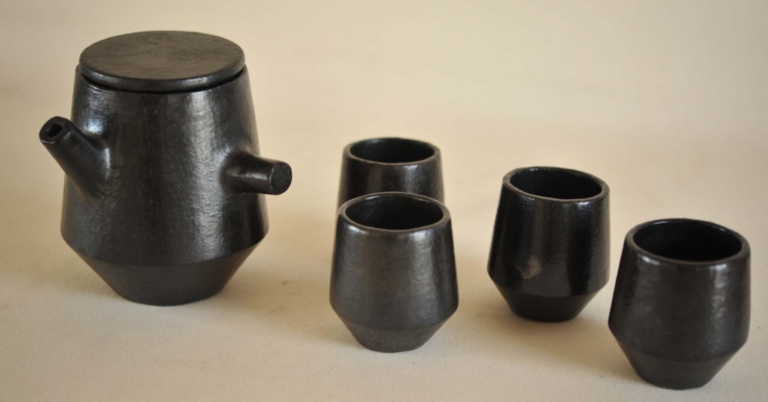Preserving Tradition: The Timeless Beauty of Nungbi Black Pottery in Manipur



Nestled in the northeastern part of India, Manipur is a land rich in cultural heritage and traditional craftsmanship. Among the various artistic traditions that have been passed down through generations, Nungbi Black pottery stands out as a shining example of the region’s artistic prowess and cultural significance. This unique form of pottery, characterized by its dark hue and intricate designs, holds a special place in the hearts of the Tangkhul Nagas of Manipur.
Historical Significance: The roots of Nungbi Black pottery can be traced back to ancient times when the Tangkhul Nagas first honed their skills in the art of pottery. The village of Nungbi Khullen, where this pottery is predominantly crafted, has been a beacon of creativity and craftsmanship for centuries. The use of serpentinite stone in the clay mixture gives the pottery its distinctive black color, setting it apart from other traditional pottery styles in the region.
Artistic Techniques: Creating Nungbi Black pottery is a labor-intensive process that requires a deep understanding of the materials and techniques involved. Skilled artisans carefully mix clay, stone, and water to form the base material, which is then shaped and molded into various forms such as cooking pots, jars, plates, and decorative items. The intricate motifs and designs adorning the pottery are often inspired by nature, tribal symbols, and cultural beliefs, adding a touch of elegance and storytelling to each piece.
Cultural Significance: Beyond its aesthetic appeal, Nungbi Black pottery holds immense cultural significance for the Tangkhul Nagas. Traditionally, pottery played a vital role in the barter and trade system of the region, serving as a valuable commodity exchanged for essential goods like rice, shawls, and spices. The art of pottery was not just a means of livelihood but also a way to preserve cultural identity and heritage, passing down age-old techniques and stories from one generation to the next.
Challenges and Revival Efforts: In recent years, the art of Nungbi Black pottery has faced challenges due to changing economic landscapes and the rise of modern materials like aluminum and plastic. However, efforts are being made to revive and preserve this ancient craft. Artisans are adapting to new market demands by creating contemporary designs and expanding their reach to urban centers and international markets. Government initiatives and cultural organizations are also stepping in to provide support and recognition for this traditional art form.
Conclusion: As we celebrate the timeless beauty and cultural significance of Nungbi Black pottery, it is essential to recognize the importance of preserving and promoting traditional crafts like these. In a rapidly changing world, these artistic traditions serve as a link to our past, a testament to the creativity and ingenuity of our ancestors. By supporting and valuing the artisans behind Nungbi Black pottery, we can ensure that this rich heritage continues to thrive for generations to come.
